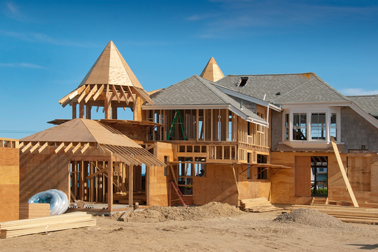
By TreeLiving
If you’re thinking of building a new house, a green home is a 21st Century must – but it needs some forward planning. Your new green home should be a way to save on energy bills as well as being an eco-friendly, life-enhancing place to live. You’ll also boost the resale value with a well planned home. Do your research and you won’t end up defeating the object with financially and ecologically costly errors.
An essential starting point is mapping out your energy needs and usage so that you can design accordingly. That includes the siting of your new green home. It’s all very well economizing on energy bills, but if you end up having to use the car all the time you’ll be cancelling out those savings. You might even end up expanding your carbon footprint instead of shrinking it, so you need to factor in all the variables.
Eco-friendly building and design may sound easy, but you’ll score by getting expert input. For example, most of us like a spacious home, but every extra square yard comes with an energy cost. With a good architect you can have a slightly smaller home that is cheaper to maintain and heat but still feels just as big and airy as one that technically has more floor area. An architect who knows the issues will also know all the tricks for making the most of a given site’s potential for green living.
For your green home you’ll want to marry great looks with top functionality all the way down the line. Great green design also means attention to details, such as the distance hot water travels down the pipes, ensuring you make the most of free available sunlight and that your heating units are the right size for the space. It’s not just about the latest gadgets and technological developments.
Quality work and finishing is also important if you want to achieve your ecologically sound, energy-saving goals. With a good builder who knows the ropes of eco-friendly construction you won’t have to worry about errors that will undo the good work of smart green home design. The experts (including non-profit organizations that can advise and monitor) will have all the latest info about the fast evolving developments in eco-friendly building, including which materials are the best to use.
There’s often more to intelligent green construction than meets the eye. For example, when you’re looking at materials, you may find that the super-organic, sustainably produced material of choice will need more intensive maintenance, or replacing sooner than one that seems a bit less green. Sometimes a more expensive material or system will really save you money and effort in the long run. Experienced advisers know about the trade-offs and hard calls you may need to make.
A green home isn’t just about cost cutting, or even eco-friendly practices, but also about your lifestyle and quality of life. Researching, getting advice and weighing up your decisions carefully will all contribute to achieving an efficient green home that’s also a joy to live in.

